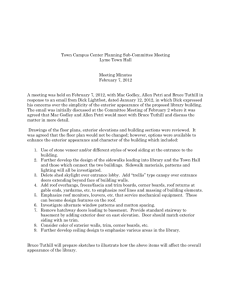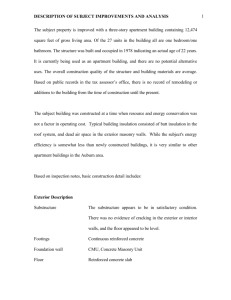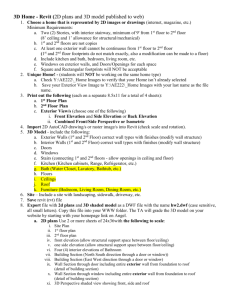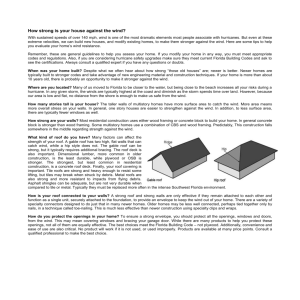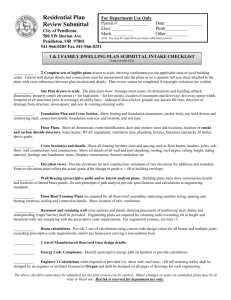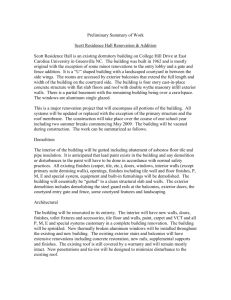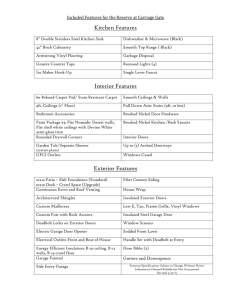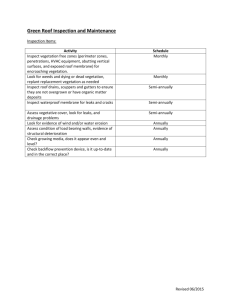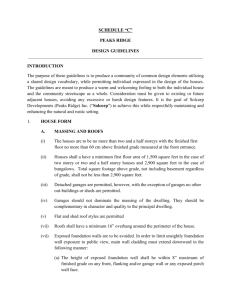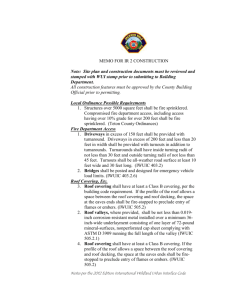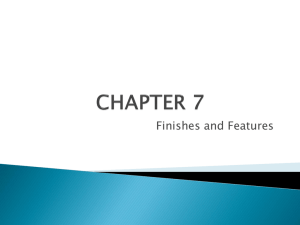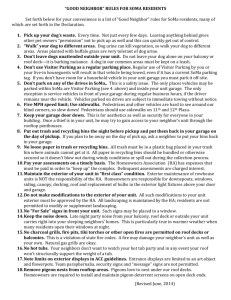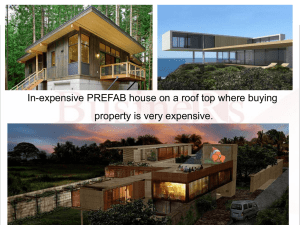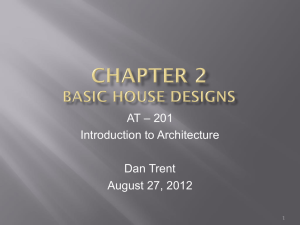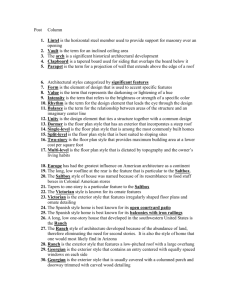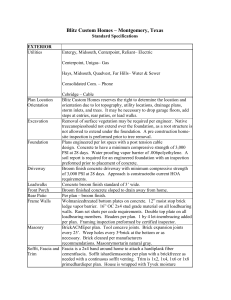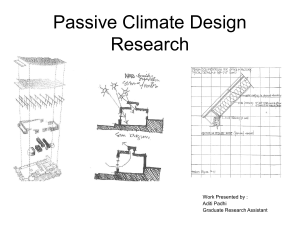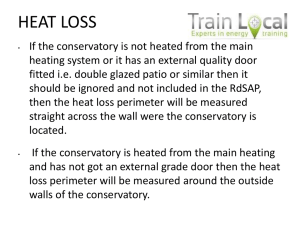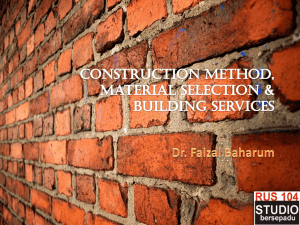SHOULD WE BUILD IN HEAVILY FORESTED AREAS?
advertisement
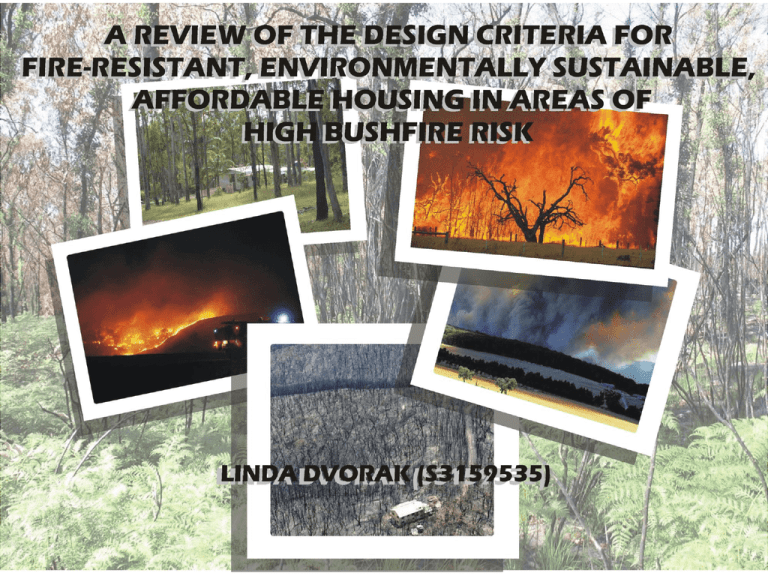
Background • Australia has always had bushfires • Their severity and frequency is increasing • Urban sprawl pushes people to build in bushfireprone areas • Qn: Should houses be built in bushfire-prone areas? If so, what types of construction should be permitted? The Critical Issues • Criteria for building in bushfire-prone areas: – Bushfire-resistance – Environmental sustainability – Affordability • These criteria often conflict • Aims of study: – Identify conflicts between criteria – Provide guidance to builders by quantifying various material combinations Parameters that increase the destructiveness of fires 1. 2. 3. 4. 5. 6. 7. Temperature > 30 C Wind > 20 km/h Dry air (relative humidity < 30%) Unstable upper atmosphere Terrain Vegetation Building features Parameters 1-4 are not controllable by individuals My research focussed on Parameters 5-7 Building Features Evaluated • Roof: – Clay-tiled – Concrete-tiled – Steel – Living • Exterior Walls: – Brick Veneer – Double Brick – Hollow Concrete block – Steel – Rammed Earth Assessment Criteria 1. Bushfire-resistance • Non-combustible materials against AS39592009 2. Environmental sustainability • Embodied Energy and Embodied Carbon 3. Affordability • Construction costs Hilly Terrain 1. Bushfire-resistance – – – Build on a flat block at base of a hill Avoid building on north-facing slopes Avoid downslopes under vegetation 2. Environmental-sustainability – – Flat block at base of a hill has minimal environmental impact Avoiding north-facing slopes conflicts with passive solar design, increasing emissions during the use phase 3. Costs – – Flat block at base of a hill reduces construction costs Avoiding north-facing slopes increases running costs Vegetation Forests - greatest risk; Grassland - lowest risk 1. Bushfire-resistance – Maximise distance between vegetation and house (Clearing allowed: Trees 10 m from house, ground fuel 30 m) 2. Environmental sustainability – Avoiding or clearing trees foregoes benefits of passive solar shading – Clearing destroys ecosystems, leads to erosion, salinity, invasive weeds and raises CO2 levels 3. Costs – Loss of shading may increase energy costs by 30% – Tree clearing is costly House shape Simple, rectangular, single-storey 1. Bushfire-resistance – Fewer ember entry points – Less surface exposed to radiant heat and flames 2. Environmental sustainability – Rectangular shape assists cross-ventilation – Cross-ventilation in a single-storey house is less effective than double-storey 3. Costs – Reduces architectural, construction and maintenance costs Roofs Simple, steep, sloping away from house (Boundary: Materials, support system, battens and hardware) Exterior walls (Boundary: Materials, binding medium, support system; battens, exterior render, interior plaster and paint where required) Roof and exterior wall combinations 2 1 Eighteen Government-funded designs Roof • • • • Many ember entry points Embers roll down onto the house Timber frame Metal cladding Exterior Walls • Many ember entry points • Timber frame • Compressed fibre cement cladding Other • Option of concrete stumps with timber joists flooring • Compressed fibre cement sheet decking Eighteen Government-funded designs Design • 65% of house is protected from weather • Entertainment area reduces spread of fires Roof • Living roof does not fuel fire Exterior Walls • Hardwood Building Standard Regulations • AS3959-2009 modelled on temperatures 400 C lower than Black Saturday’s • Black Saturday’s temperature was 127 C lower than possible in bushfires • Test standard AS1530.8.2 does not include effects of wind Conclusions • Houses built to current building standards are unlikely to survive fires of even lower intensity than Black Saturday • AS3959-2009 and AS1530.8.2 standards are inadequate • A living roof on rammed earth walls is the best combination for fire-protection, low embodied carbon, at moderate costs Conclusions cont. • Second best choice is a living roof on double brick walls, at 21% less cost • Fire-risk, embodied carbon and costs can be reduced by building: – On a flat block at the base of a slope, away from dense forest and downslopes under vegetation – A rectangular single-storey house Questions

